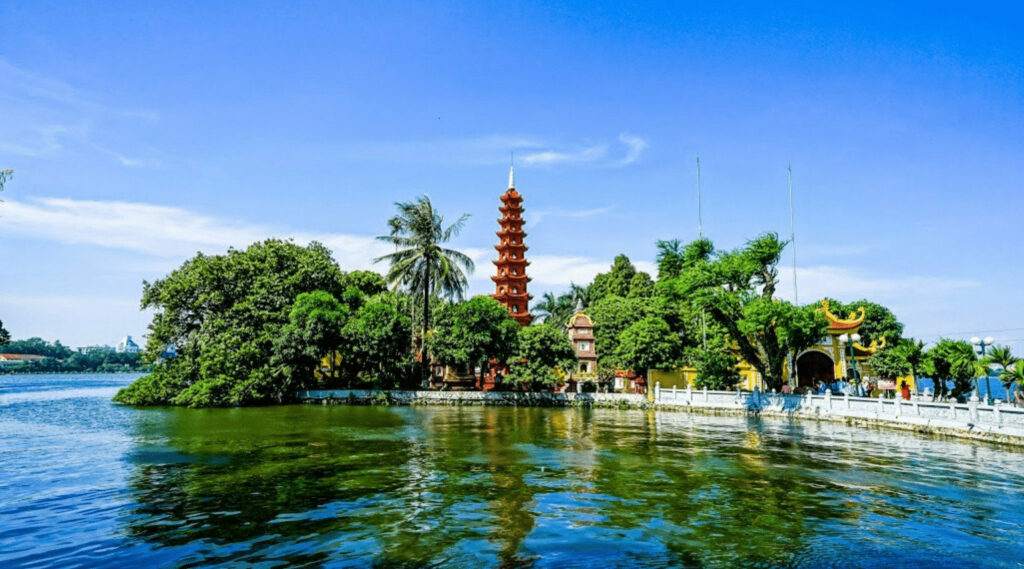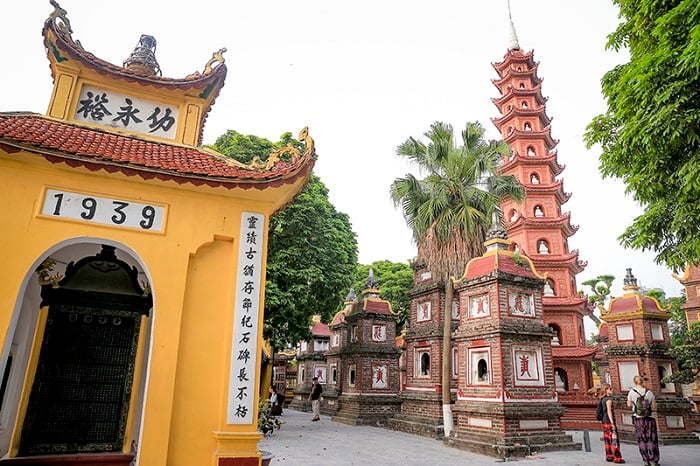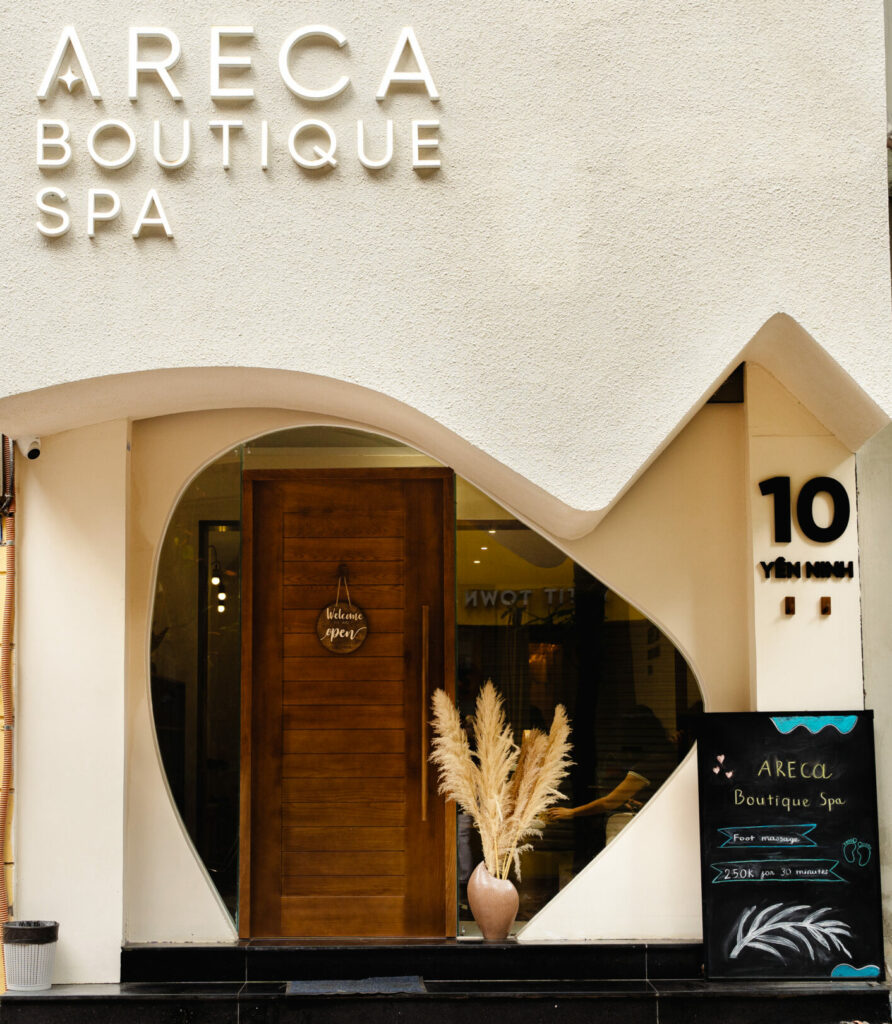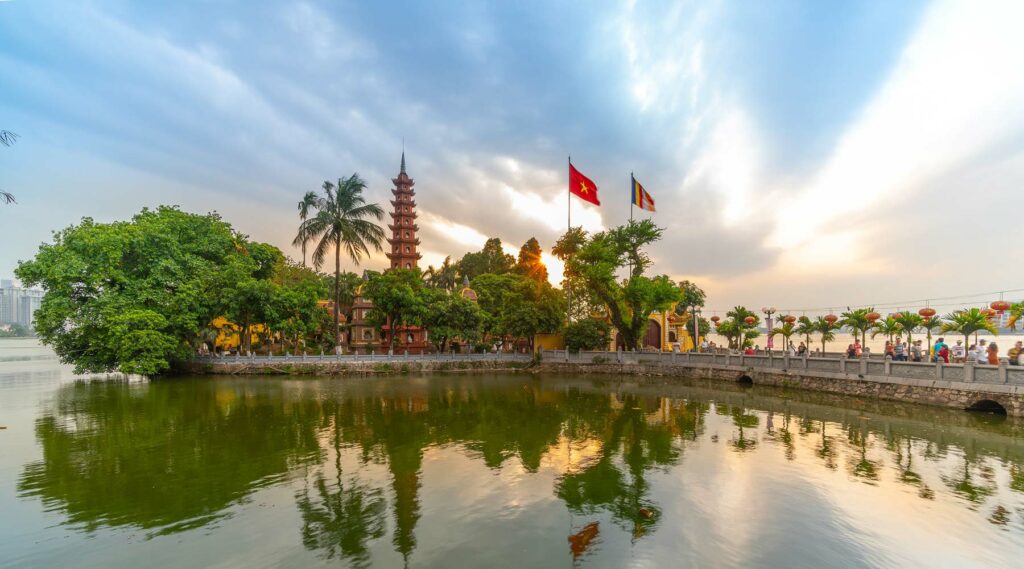When it comes to Hanoi travel and tourism, tourists should not miss out on Tran Quoc Pagoda, the oldest pagoda in this city with a long-standing history. Being a sacred “gem” in the middle of West Lake, this religious site is an ideal spot for any cultural enthusiast in Vietnam’s capital.
Where is Tran Quoc Pagoda in Hanoi
Tran Quoc Pagoda is located on a small islet of West Lake (Tay Ho District, Hanoi). Visitors can go inside the pagoda through its main gate on No. 46, Thanh Nien Street. Tran Quoc Pagoda worships Amitabha Buddha, Shakyamuni Buddha, and Avalokitesvara Bodhisattva. Additionally, there is an altar dedicated to Guan Yu, Guan Ping, Zhou Shang, and Anathapindika.
Tran Quoc Pagoda is also very close to many of Hanoi’s top attractions, such as Ho Chi Minh Mausoleum and Temple of Literature. It serves as a convenient starting point to explore the city’s cultural and culinary offerings. There are also plenty of beautiful sights for visitors to immerse themselves in near Tran Quoc Pagoda.

Things to know about Tran Quoc Pagoda
With outstanding features, Tran Quoc Pagoda can offer tourists a unique cultural and religious experience. Here are some of the things you might want to know about this destination.
Long-standing history
With a history of 1,500 years, Tran Quoc Pagoda is the oldest pagoda in Hanoi. It was built in 541 in the Early Ly Dynasty, originally named Khai Quoc Pagoda. At that time, the pagoda was located near the banks of the Red River. In 1615, when the dyke collapsed, the pagoda was relocated to Yen Phu dyke in the Kim Nguu mound area.
The pagoda’s name was changed to Tran Quoc during the reign of King Le Hy Tong (1681 – 1705), with the hope that Tran Quoc Pagoda would be a place to help people repel natural disasters and also bring them a peaceful life. The name “Tran Quoc” is used to this day.
Fast forward to the Tran Dynasty, Tran Quoc Pagoda was deemed the capital of Buddhism. Today, it is considered an iconic symbol of Hanoi.
Marvelous architectural complex
Adhering to the strict principles of Buddhism, Tran Quoc Pagoda preserves the aesthetic beauty of Eastern architectural style.
The pagoda’s 3000-meters-squared design is a harmonious blend of traditional elements, characterized by intricate woodwork, gracefully curved roofs, and delicate ornamentation. Each detail is a testament to the reverence for nature and the pursuit of spiritual balance that Buddhism embodies.
The 11-Storey Stupa (Bao Thap)
As soon as you enter the pagoda, you will be greeted by a remarkable sight – The majestic red-brown tower standing proudly before you, known as the 11-storey Stupa or Bao Thap. This exquisite tower is a captivating masterpiece, comprised of eleven distinct stories, each adorned with six elegantly arched doorways. Within these doorways, white gemstone statues of Amitabha Buddha stand in tranquil reverence, emanating an aura of serenity and enlightenment. The presence of the Buddha statues within the doorways serves as a reminder of the Buddha’s teachings and the path to enlightenment.

The 11-storey Stupa
The Front House (Tien Duong)
Upon entering the Front House of Tran Quoc Pagoda, you will see many unique statues. One of them is the statue of Shakyamuni Buddha made out of wood with glossy golden paint. This particular statue has earned the esteemed recognition of being voted as the most beautiful Lying Buddha statue in Vietnam.
This masterpiece of a statue not only showcases the dedication and skill of the artisans who created it but also captures the essence of the Buddha’s teachings – transcendence, serenity, and the pursuit of inner peace.
As you stand in the presence of this statue, you are invited to contemplate the profound significance of the Buddha’s life and teachings, and perhaps find a moment of stillness and reflection amidst the spiritual ambiance of Tran Quoc Pagoda

The many statues in the Front House
The Incense Burning House (Nha Thieu Huong)
The Incense Burning House is one of the bustling focal points within Tran Quoc Pagoda, drawing a steady stream of visitors and creating an atmosphere of vibrant activity.
Here, you can burn incense and other votives to pray for good luck and health. The act of burning incense symbolizes the purification of intentions and the elevation of prayers to higher realms. It is a cherished ritual that you will want to try.
The Upper House (Thuong Dien)
Behind the Upper House, there is a bell post that was designed as a 3-compartment wooden house roofed with red tiles. To the right of the bell post is the Stele House, an equally intriguing feature within the pagoda’s premises.
These structures, the bell post and the Stele House, together form a captivating tableau of architectural and historical significance.
Seeking a peaceful retreat in the heart of Hanoi’s bustling Old Quarter? Look no further than Areca Boutique Spa & Homestay. Our serene sanctuary offers the perfect blend of convenience and tranquility, making it an ideal base for exploring all that Hanoi has to offer.
Unwind and Rejuvenate:
Indulge in our luxurious spa treatments, designed to soothe your body and mind. Our skilled therapists utilize traditional techniques and natural ingredients to create a truly restorative experience.
Rest and Recharge:
Retreat to our cozy homestay accommodations after a day of exploring. Our well-appointed rooms provide a comfortable and inviting space to relax and recharge.
Prime Location:
Nestled in a quiet neighborhood just moments away from the Old Quarter’s vibrant energy, Areca offers the best of both worlds. Easily access iconic landmarks, bustling markets, and diverse culinary experiences, then return to your peaceful haven for a restful night’s sleep.
Experience the Best of Hanoi:
Whether you’re seeking cultural immersion, culinary adventures, or simply a relaxing escape, Areca Boutique Spa & Homestay is your gateway to discovering the rich tapestry of Hanoi.


